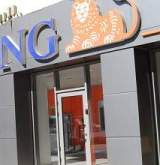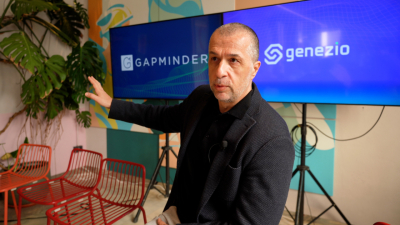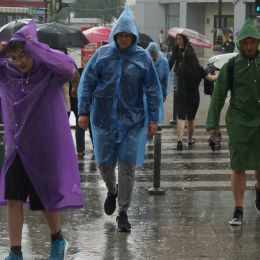Mike Wittenstein: Customer experience has four definitions, depending on how you want to use it.
1. As a perspective customer experience includes what we do for our clients and their customers, rather than what we do to them. We should never let our company’s processes define our customer’s experience with us.
2. The emotions that come with a great customer experience is also a valid business outcome. Customers experience everything at once as a feeling. Customers do not usually see behind the scenes into business rules and processes.
3. Business Strategy is the third definition of customer experience. More than just an ideal future state we strive for, designing the customer experience can become the purpose for our business as well as the way we run it.
4. Customer experience is also a valuable kind of communication. When we share requirements of the ideal customer experience as a clear and detailed picture of the future, each department in the company can work independently, yet arrive at the outcome of a seamless experience for customers.
Wall-Street: What are the main differences between this concept and customer service?
Mike Wittenstein: Customer experience is what you do FOR customers to make their lives easier and to give them greater value. It is the tangible expression of your brand. It is your company’s DNA. It is why you wake up in the morning.
On the other hand, Customer Service is a department in a store where many companies send customers with problems. If your needs as a customer extend beyond what the company can easily and profitably service, you get sent to this cost center (I use the term ‘cost center’ because, unfortunately, many businesses see it as such).
Ideally, customers should receive great customer service as part of an exceptional customer experience. There’s no reason not to offer both in my opinion.
Wall-Street: What brands do you believe have a good customer experience and why?
Mike Wittenstein: Disney because they concentrate on the details at the scale of large enterprise. (I know firsthand because I grew up in Orlando, Florida, the home of Disney World.) The Disney experience is so popular that on any given day, I’m told, approximately 75% of the guests are repeaters. Many parents like to give their kids a Disney experience. It’s been going on for 3-4 generations now.
Apple because they turned retail upside down and inside out. Most of your expectations for shopping cease to exist when you visit an Apple store. They are replaced with fresh, new, fun expectations for learning, comparing, deciding, and using.
James Cameron (movie director/producer) because he focuses intently on creating bigger-than-life yet extremely believable films. No, actually, he’s in the experience creation business. You’ve seen Avatar, haven’t you?
Build-a-Bear Workshops (retail store) lets kids build their own stuffed animal by giving them grown-up decisions and responsibilities at each stage of the in-store construction process. This retail concept truly delivers an experience for both gift receiver and gift giver. I’ll talk about it in my presentations and workshops in Bucharest on April 20.
GOING DOWN
Starbucks has updated the furniture in some of its locations in my city, but it hasn’t truly innovated in a way that I, the customer, can feel. It’s still too noisy and too hard to find a plug for my laptop ;-)
LOSERS
Every telecom and cable company I’ve ever tried. If they put a small portion of what they invest in keeping us from using their services (complex software to charge more for minutes, software that doesn’t let us tether our laptops to our mobile phones, etc.) on new services and tools that would make our lives easier and more enjoyable, I’ll be customers and shareholders could be happier at the same time!
Most airlines I fly in the United States because they fail to communicate clearly what they will do for you as a customer. Most of the time, you find out when it’s inconvenient what they won’t do for you or what they now charge for.
Wall-Street: What are the most frequent mistakes companies make when it comes to customer experience?
Mike Wittenstein: I believe the biggest mistake is trying to do too little. Just painting something gold doesn’t make it more valuable. It takes a combination of efforts between marketing, operations, people and technology to make the kind of changes customers want to see and feel—then share with their friends.
Wall-Street: What are the main three steps for building a good customer experience?
Mike Wittenstein: Make sure that you make the right promises.
Make sure that you keep the ones you make.
Remember to design from the customer’s point of view. (This involves observing and listening to real customers on a regular basis.)
Wall-Street: How did the financial crisis change customer experience?
Mike Wittenstein: When the market plunged, people became unsure. They ‘bought down’ which means to replace normal purchases with less expensive ones. What used to be a routine purchase received greater consideration. For the businesses that were selling to these scared people (B2B and B2C), it became important to meet the expectations they brought with them from their higher-priced vendors. Providing more service at a lower cost forced many now successful service businesses to innovate. I don’t mean just changing price points and product, I mean re-architecting the way they work so that they can meet more of their customers’ needs. It’s been a difficult yet very health-inducing time for companies that differentiate their experiences to compete better.
Wall-Street: What low cost improvements can we bring to the customer experience for our brand, with great results?
Mike Wittenstein: Make sure your employees get the kind of experience inside the business that you expect them to give to customers on the outside. If they don’t get the opportunity to feel a great experience, how do you expect them to deliver one?
Bring customers, real customers, into your company meetings to meet them, get to know them on a personal level, and to listen to their needs, issues, and very importantly, to learn the way they see the world—and your business. Just this one new behavior will have an effect on your thinking and cause you to think more about your customers when you make decisions that impact them. This practice will help you prioritize improvements according to what customers perceive as most valuable. This can only improve your experience.
Wall-Street: What are the latest trends in customer experience?
Mike Wittenstein:The latest trends being adopted by the mainstream now include metrics and return on investment (ROI). Both are powerful tools, but be careful of how you use them. If you evaluate ROI from only the perspective of profitability for your business, you will miss the point of designing for what the customer wants and what makes the customer’s life easier.
The latest trends include the application of systems thinking and service systems to optimize experiences at the rational, emotional, and financial levels simultaneously. It’s a triple-bottom-line kind of thinking. Finally, businesses competing successfully by offering a distinctly better customer experience are more focused on instilling agility into their organizations. Adaptive Enterprises, as they are sometimes called, are better at providing the support mechanisms employees need to serve an ever greater range of client requests on the front lines.
Wall-Street: Can you mention one of your CE projects that can become a case study?
Mike Wittenstein: Alternative Apparel is a designer and contract manufacturer of blank t-shirts which they supplied to retailers and to decorators (the companies that printed the shirts with logos, pictures, etc.). Originally, they thought their customer was represented by the retailers who wrote the checks. When they realized that the customer that mattered most to their success was their customer’s customer, the person who actually wore the shirt, things started to change.
There was a buzz (excited communication) inside the company. Ideation accelerated. A B2C website opened, then some stores. Now the company’s sales have gone up several hundred percent and there are more opportunities to serve than ever before. The company started its own customer experience department and its own employee experience department based on the work we did together. Even during tough economic times, the firm fares well.
Wall-Street: What about one that you consider a failure?
Mike Wittenstein: Rather than failures, I think about closeness or distance from success. The most common failure with customer experience projects is the same as with other culture-changing, large-scale projects which is authentic and continued support from senior executive sponsors. All too often the support afforded a project is too short-lived or the management changes and with it, the project’s goals change. It’s impossible for any project to be designed to meet one set of expectations then be evaluated against a completely different set of metrics.
Mike Wittenstein will hold a conference on customer experience on April 20 at Bucharest, in partnership with theConsultants.
Citeste si:
Calculator Salariu: Află câți bani primești în mână în funcție de salariul brut »
Te-ar putea interesa și:



















































































![HR [PLAY] Tech Workout - 11...](https://www.wall-street.ro/image_thumbs/thumbs/973/973fe0a3888d417feff63de42e814180-260x260-00-65.jpg?v=1713542624)









